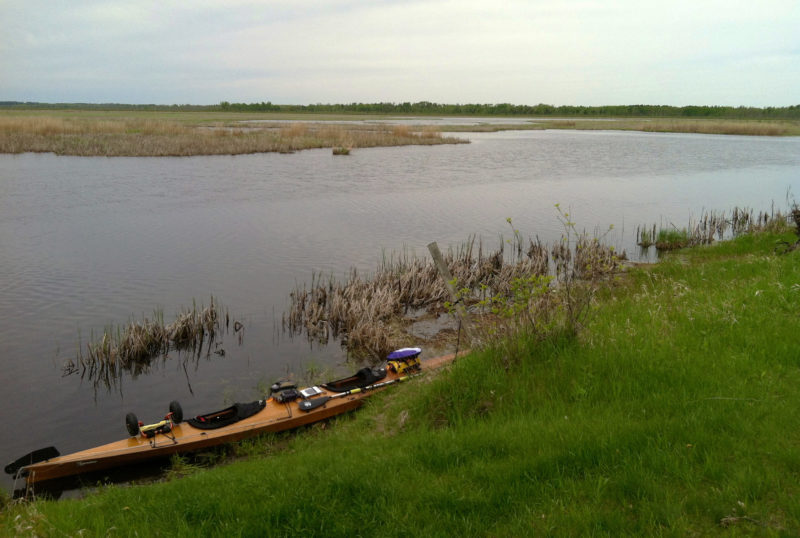 Photographs courtesy of Barb and Gene Geiger
Photographs courtesy of Barb and Gene GeigerAt its headwaters, the narrow stream of the Mississippi twists and turns through a maze of wetlands and bogs. Checking the current’s effect on underwater plants helped Barb and Gene stay with the main channel, avoiding costly wrong turns.
Harold “Hal” Hoops of Green Bay, Wisconsin, loved boats and dreamed that he’d one day build one. Then a stroke confined him to a wheelchair. His daughter, Barb, a divorced mother of a young son at the time, often drove the 140 miles from her home in Waukesha to visit her dad and mom. During one visit she noticed Hal browsing the ads in the back of the latest issue of WoodenBoat. He paused at the Pygmy Boats ad and said, “I always wanted to build one of these, but there’s not much point anymore.”
Fortunately, where Hal saw regret, Barb saw opportunity. She envisioned a family project that she, her father, and her son, Eric, could enjoy. They placed an order for an Osprey Double kayak kit and began the project on a work table built for the height of Hal’s wheelchair, finding what time they could together in Hal’s basement. The project went slowly and while the kayak was still in the works, Barb remarried and her husband Gene joined the project. The extra pair of hands made the work go faster, but there was still much to be done when Hal fell ill and passed away in April, 2010 at the age of 80.
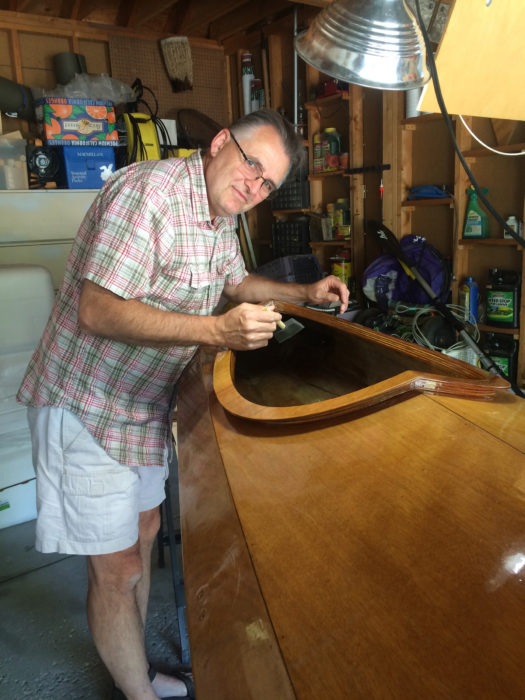
Gene patrolled the deck looking for drips before the last coat of varnish began to dry.
Barb, Eric, and Gene brought the unfinished kayak home to Waukesha to complete it. At the launching, they dedicated the boat to Hal’s memory and christened her KUPENDANA, Swahili for “Love one another.” After their first outing, Gene suggested paddling the Mississippi River—all of it—from its source in northern Minnesota to the Gulf of Mexico. Even though Eric was now in college and Barb was retired from teaching, she had trouble embracing the idea. But then, during a Sunday sermon, Barb and Gene were both inspired to incorporate an element of service to the communities along the route. They would make their river travel a manifestation of kupendana. Barb and Gene dehydrated food, mixed ingredients for meals, gathered equipment, and made contact with service organizations along the 2,000-mile route they had planned for their 6-month voyage.
They embarked from Lake Itasca, the source of the Mississippi River, and paddled the stream’s serpentine path northward toward Canada for 60 river miles before turning south, bound for the Gulf. During their first 10 days on the river, they had seven days of rain, capsized twice, and encountered a granite boulder which punched a hole in the kayak’s hull.
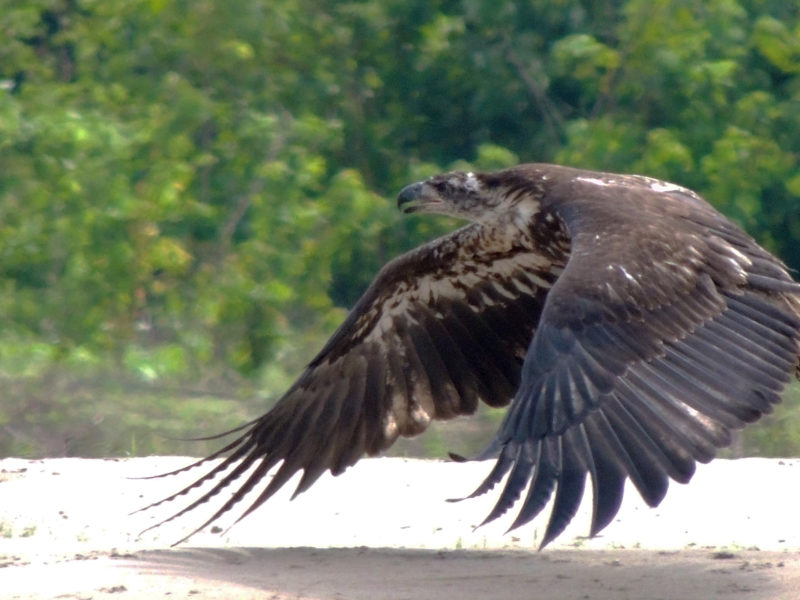
Bald eagles were plentiful in Minnesota, Wisconsin, and Iowa. Juveniles remain a mottled dark brown color for four to five years before developing their characteristic white heads and tails.
But life on the Mississippi was not without its upside; people along the river helped them through the rough patches and there was no shortage of beauty in the landscape. In the wilderness surrounding the Upper Mississippi, the Geigers enjoyed the company of muskrats, turtles, deer, and innumerable birds. They made stops in towns along the way and took part in projects with Habitat for Humanity, Ronald McDonald House, and the Salvation Army, as well as a number of homeless shelters and food banks.
Their original plan was to descend the entire length of the Mississippi River, but concerned about the volume of barge traffic on the Lower Mississippi, they turned onto the Ohio River at the southern extremity of Illinois and paddled some 40-plus miles upstream to the mouth of the Tennessee River at Paducah, Kentucky. They continued working their way upstream to the Tenn-Tom Canal, traveling through a series of 11 locks in the course of its 236 miles. The last leg of their voyage, the Mobile River, delivered them to the Gulf of Mexico.
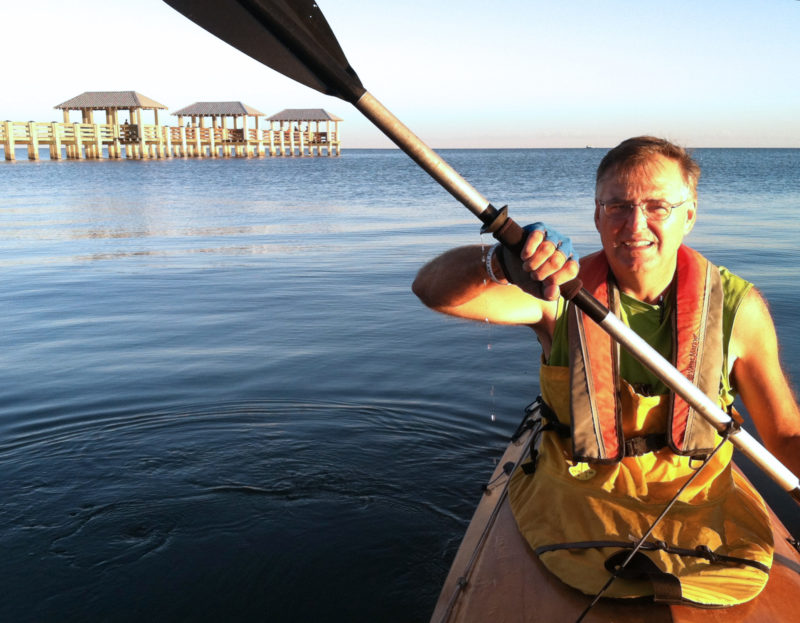
As approaching evening tinges the horizon with gold, Gene enjoys our final paddle. We had reached the Gulf of Mexico.
KUPENDANA not only fulfilled Hal’s dream of building a kayak and the couple’s inspiration to serve the riverside communities, it gave Barb a story to tell. She has written a memoir about the kayak trip titled Paddle for a Purpose, scheduled for release on April 3, 2018. It will be available through a link on her web site and all profits will be donated to charity—kupendana.![]()
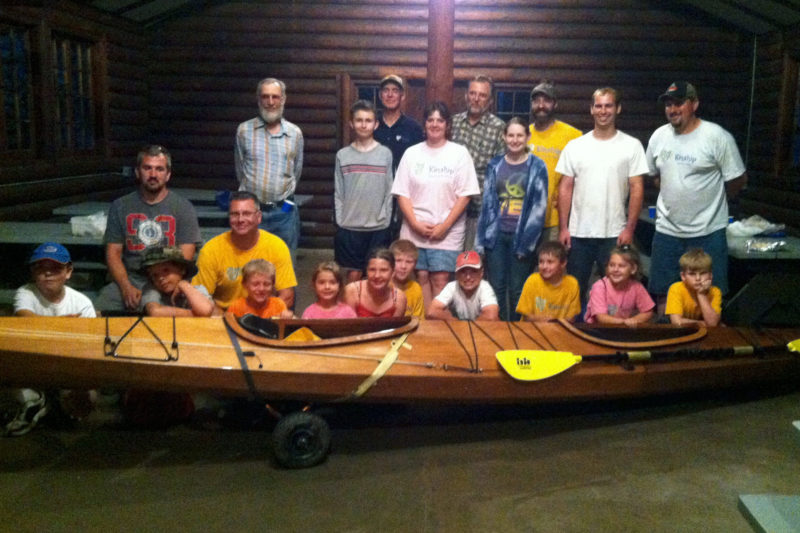
Kinship of Morrison County, an organization in Little Falls, Minnesota, provides adult mentors for children of single-parent families. Gene and Barb helped with a canoeing, bicycling, and hiking triathlon, then gave a presentation about their kayak trip and the rewards of service to others.
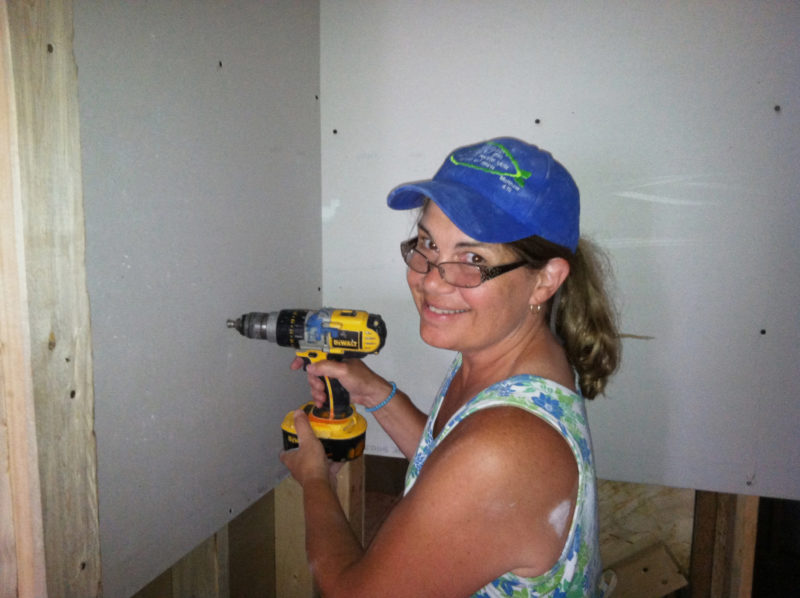
After helping insulate a house that would be a home for a family of nine, Barb put up drywall at a Habitat-for-Humanity build in Crystal, Minnesota.
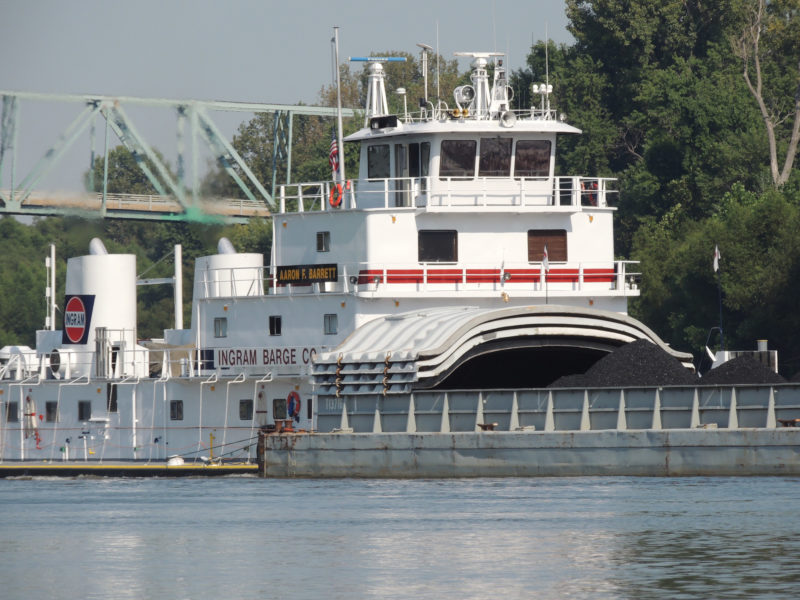
South of the Twin Cities, locks replace portages and a deep channel assures safe passage for larger commercial and recreational vessels. Barge tows like this one became a common sight.
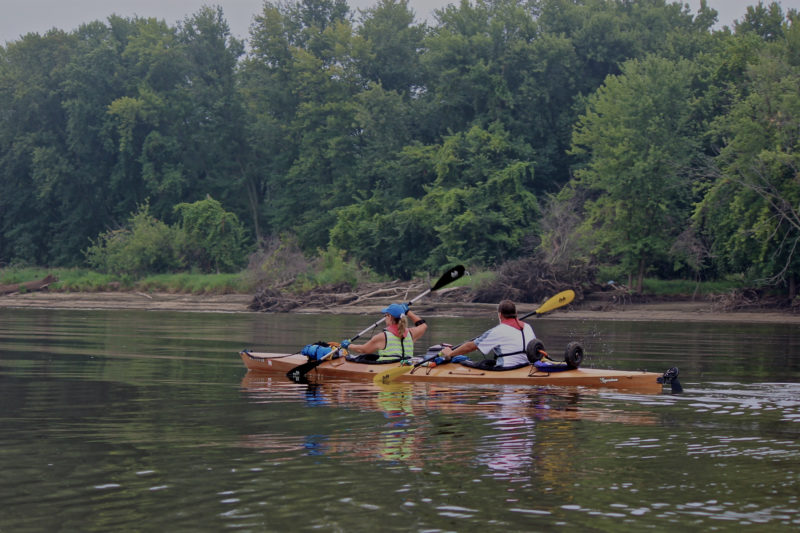
South of Dubuque, Iowa, a couple new friends accepted an invitation to paddle along for a day and provided rare photos of both Barb and Gene in the kayak together.
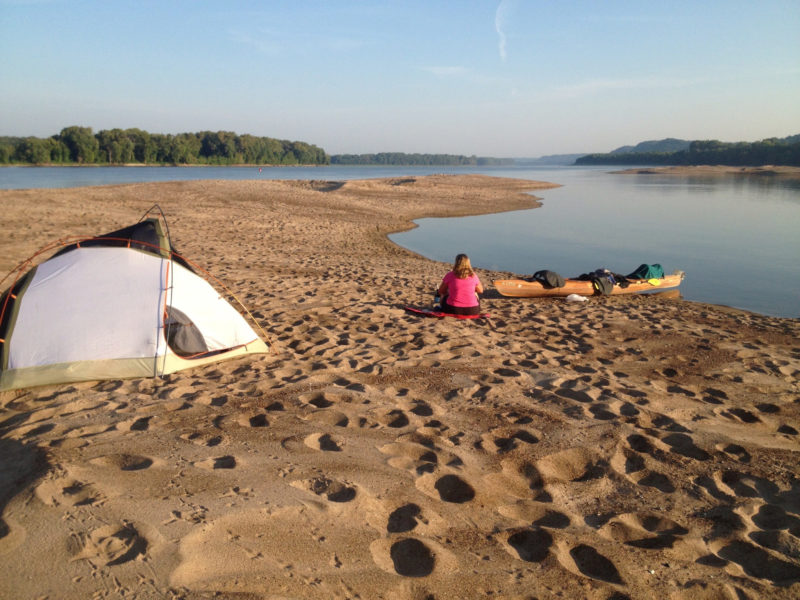
Sand islands in the rivers provided free and solitary campsites.

The Chain of Rocks Canal bypasses a treacherous set of rapids just north of St. Louis. The lock at the bottom of the canal opens up to this view of America’s Gateway City and its arch.
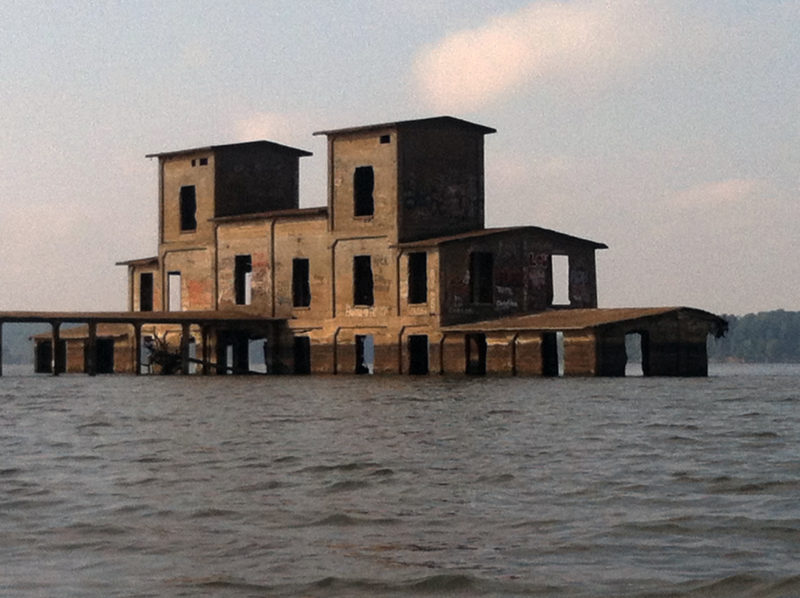
Formed in the 1940s by Kentucky Dam to the north and Pickwick Dam to the south, the 180-mile-long sportsman’s paradise known as Kentucky Lake was the demise of many small towns that were flooded by its creation. The top two floors of the Danville Mill, once a six-story grain mill on the dry ground, are a stark reminder of the reservoir’s cost.
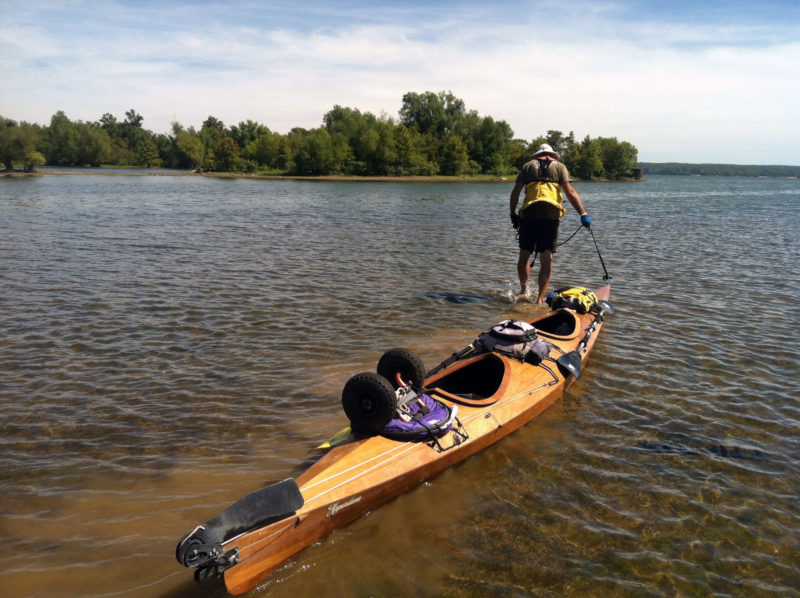
Gene pulled KUPENDANA over an unexpected shallow sand bar between two of the islands in Kentucky Lake.
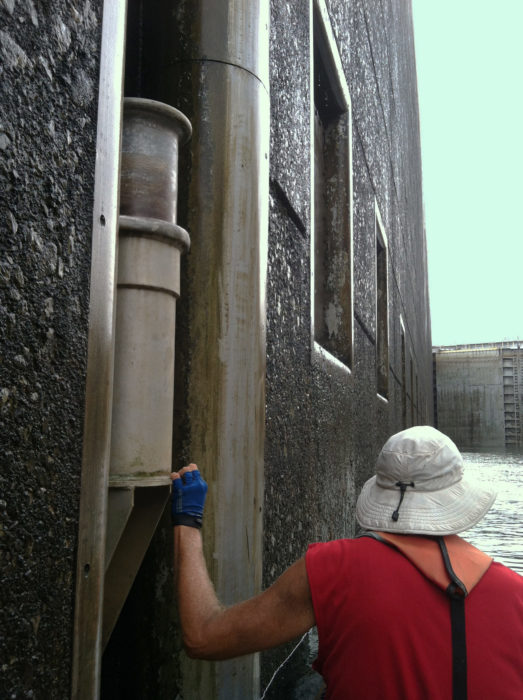
Bollards on tracks float up and down with the water level in the deep drops of the locks in the Tennessee-Tombigbee Waterway. Most vessels loop a line around the top of the bollard, but Gene could only get a fingertip grip on it.
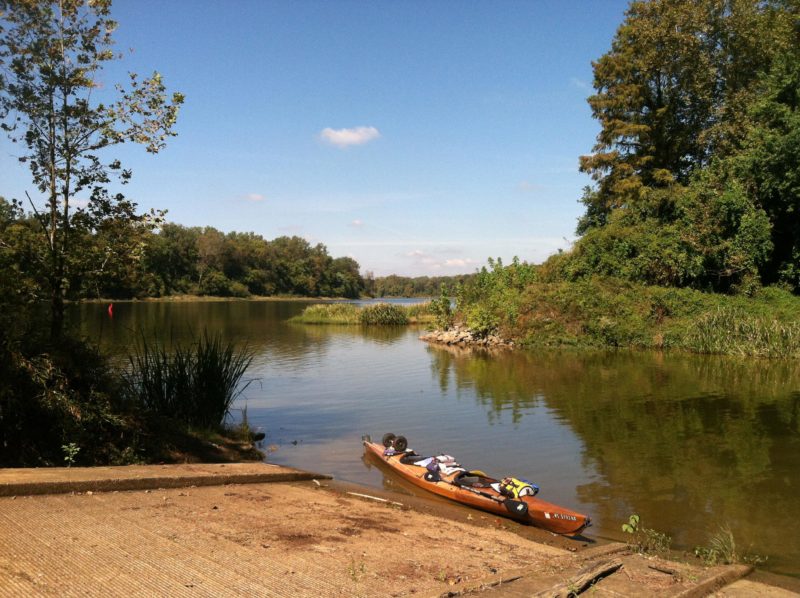
The Tenn-Tom Waterway cuts a route straight through the twists and bends of the old Tombigbee River. Side streams and oxbows provided opportunities for secluded breaks.
Have you recently launched a boat? Please email us. We’d like to hear about it and share your story with other Small Boats Monthly readers.
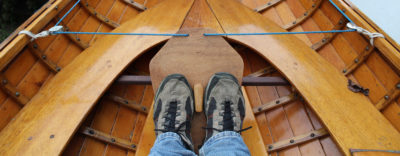

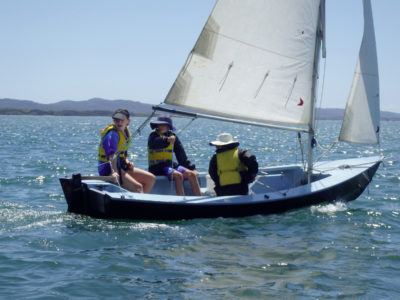
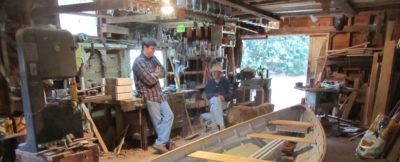
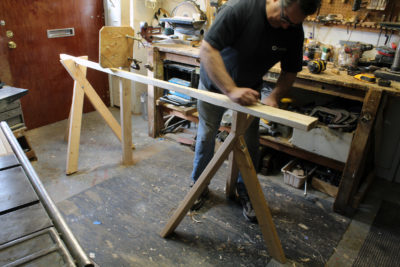
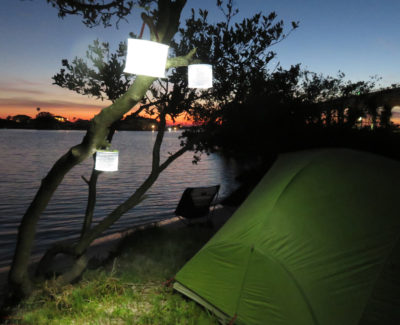
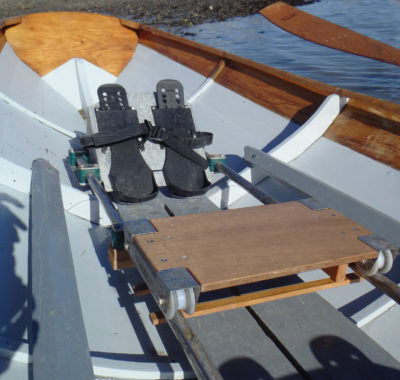
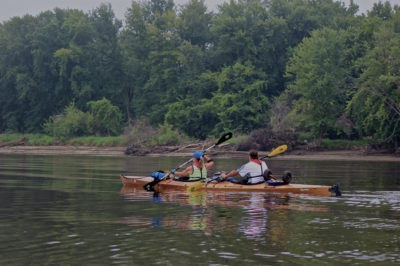
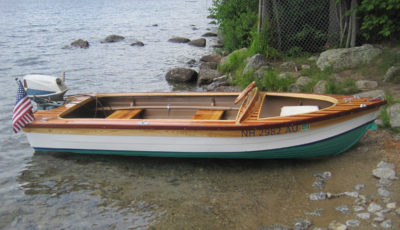
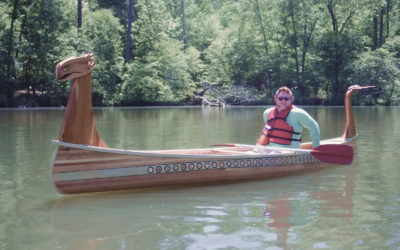
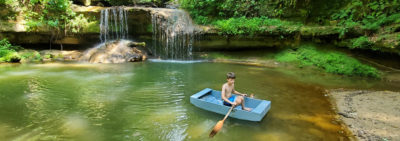
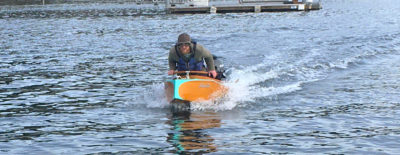
Inspiring story
What an awesome story. It makes me want Spring to finally come so I can get back on the water and go exploring the waters of Maine.
A wonderful use for a beautiful craft. Well done.
Thank you, Chris, for this beautiful tribute to my father. He enjoyed reading boating magazines in his spare time, and would have loved to know that the story of a boat he helped build was in Small Boats Monthly. I am very grateful.
I am quite familiar with Pygmy kayak kits, having built a Goldeneye and two Cohos (all were singles), as well as mentoring several friends in the building of theirs. They are good boats, well designed and very seaworthy even on the open ocean. But i’ve never built a double. Unfortunately it’s too late for that, as John Lockwood oversaw the demise of the Pygmy company a year or two ago.
The building of the kayaks convinced me of the viability of stitch-and-glue construction, also that the wires used in the stitching should be removed after the epoxy has cured (please, epoxy doesn’t “dry,” it undergoes a chemical cure). I mention this because Chesapeake Light Craft calls for copper wire, which is left in place to be glassed over (but I don’t know whether they still do this). I think Pygmy’s system is superior.
I should also mention a technique for glassing over convex curves such as found at bow and stem stems. This calls for cutting bias-weave strips from glass cloth. I use a 4′ ruler laid across the cloth diagonally. Then I use a razor knife to cut a strip about 4″ wide. Parallel strips can be cut as well if you have a use for shorter ones. With bias cut “tape” you can easily glass these curves without any puckering or need to cut gores in the tape.
A curious thing about bias cut tape is that pulling on it endwise lengthens it and makes it narrower, but stretching it laterally (side to side) widens and shortens the tape. It’s really very flexible and leaves a much nicer, smoother layup. This, of course, could be of use in any fiberglass work on any kind of stitch and glue boat. Bias tape can also be used in concave curves, but that is a messier process, obviously (at the extreme ends of the boat, I mean). I have used it on the inner surface of chine joints, where it works very well.